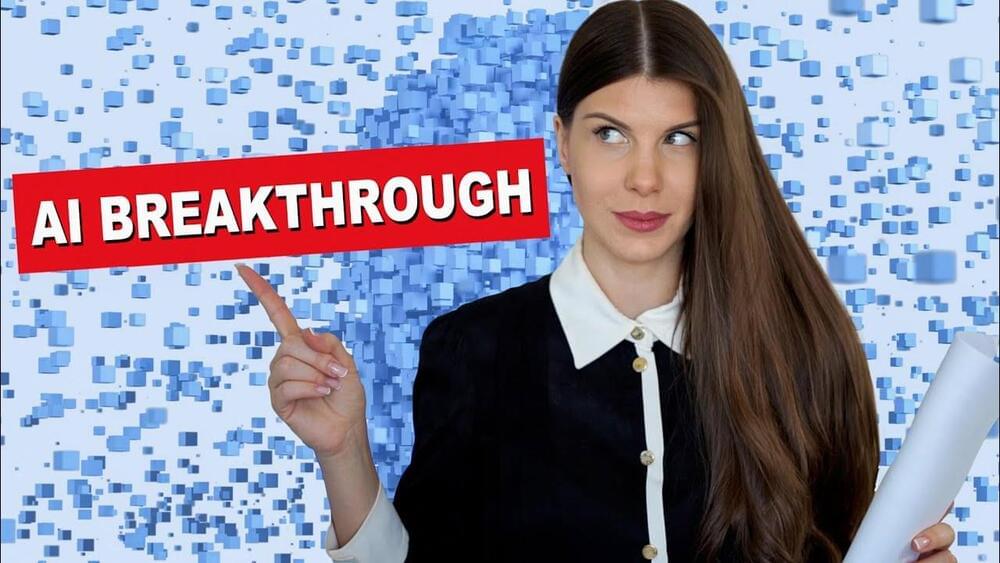Mar 23, 2023
A New Kind of Battery—Oxygen-Ion—Could Change Energy
Posted by Quinn Sena in categories: energy, materials
😗
It’s incredibly rechargeable, made from safe materials, and—get this—not going to catch on fire.
😗
It’s incredibly rechargeable, made from safe materials, and—get this—not going to catch on fire.

This sure didn’t take long — a ChatGPT clone for your desktop.
In this video I discuss New AI Model developed by researchers from Stanford and how AI models train each other to get better. Exciting times!
Continue reading “AI Inception 🤯 New Groundbreaking AI from Stanford” »
Robots in their current form contribute far more to our modern day life than you may realise. They may not be the sci-fi androids many imagine, but they’re hard at work doing tasks like building cars, or learning how to control nuclear fusion (opens in new tab). Only in recent years are we starting to see robots like you might have imagined as a kid, with Boston Dynamics’ creations doing all sorts of crazy stunts (opens in new tab) like dancing (opens in new tab) or guarding Pompeii (opens in new tab).
Robotics isn’t all about metal machines it turns out, and biohybrid robots may be part of our cyberpunk future too. It’s only been a few days since I was introduced to OSCAR, an artist’s rendition of a disgustingly meaty, pulsating flesh robot (opens in new tab). As wonderful and vivid as those videos are, it’s a good time to take a palette cleanser with a look at a real-world biohybrid robot.

A quantum computer in the next decade could crack the encryption our society relies on using Shor’s Algorithm. Head to https://brilliant.org/veritasium to start your free 30-day trial, and the first 200 people get 20% off an annual premium subscription.
▀▀▀
A huge thank you to those who helped us understand this complex field and ensure we told this story accurately — Dr. Lorenz Panny, Prof. Serge Fehr, Dr. Dustin Moody, Prof. Benne de Weger, Prof. Tanja Lange, PhD candidate Jelle Vos, Gorjan Alagic, and Jack Hidary.
Continue reading “How Quantum Computers Break The Internet… Starting Now” »
LiGO is a new machine-learning technique developed by MIT researchers that cuts by about 50 percent the computational cost required to train large vision and language models.
Just a few days after hatching, zebrafish larvae can discriminate between bigger and smaller numbers, suggesting they may have an innate numerical ability.
An international team of scientists is developing an inkable nanomaterial that they say could one day become a spray-on electronic component for ultra-thin, lightweight and bendable displays and devices.
The material, zinc oxide, could be incorporated into many components of future technologies including mobile phones and computers, thanks to its versatility and recent advances in nanotechnology, according to the team.
RMIT University’s Associate Professor Enrico Della Gaspera and Dr. Joel van Embden led a team of global experts to review production strategies, capabilities and potential applications of zinc oxide nanocrystals in the journal Chemical Reviews.
At its annual GTC event, Nvidia announced a partnership with Tel Aviv-based Quantum Machines to create a state-of-the-art architecture for quantum-classical computing.
The collaboration intends to bring about purpose-built infrastructure for quantum computing and GPU supercomputing capable of real-time quantum error correction. Known as DGX Quantum, the first system is expected to deploy to the Israel Quantum Computing Center.
A team of researchers from the Université libre de Bruxelles and the French National Center for Scientific Research have shown for the first time that an exotic type of process violating causal inequalities can be realized with known physics. A violation of a causal inequality proves under theory-independent assumptions that certain variables in an experiment cannot be assigned a definite causal order.
This is a phenomenon that has been known to be possible in theory, but widely believed impossible in practice, at least in the known regimes of physics. The new study, published in Nature Communications, shows that such processes can in fact be realized in standard quantum mechanics using variables that are delocalized in time. The finding may have far-reaching implications for our understanding of causality in physics.
The concept of causality is essential for physics and for our understanding of the world in general. Usually, we think of events as happening in a well-defined causal order. That is, they are ordered according to some time parameter, such that events in the past can influence events in the future, but not vice versa. For instance, the sunrise causes the rooster to crow, but whether the rooster crows does not have any influence on the sunrise.
Scientists have found evidence using neuroimaging that the native language people speak may affect the way that their brains are wired.
Researchers from Max Planck Institute for Human Cognitive and Brain Sciences in Leipzig analyzed and compared the brain scans of native Arabic and German speakers. The languages were selected for the reason that they are significantly different.
Their results indicate the native language of an individual can influence the connectivity between areas of their brains.
